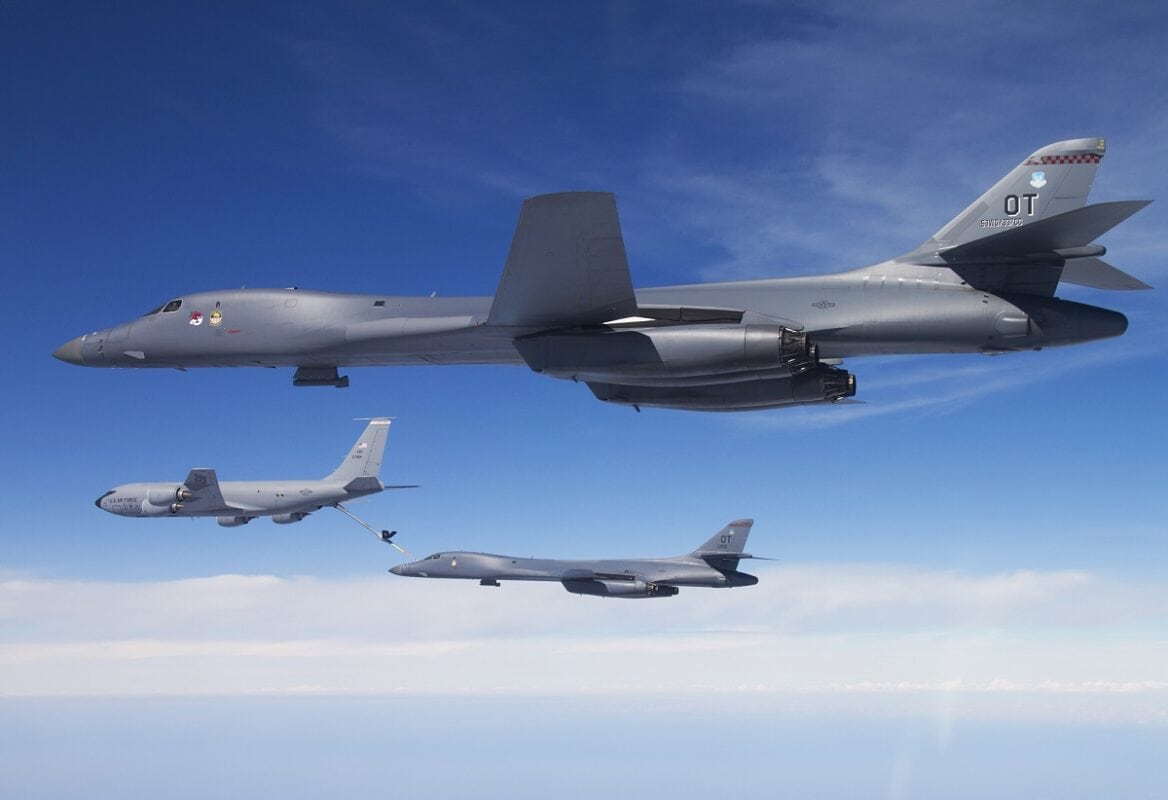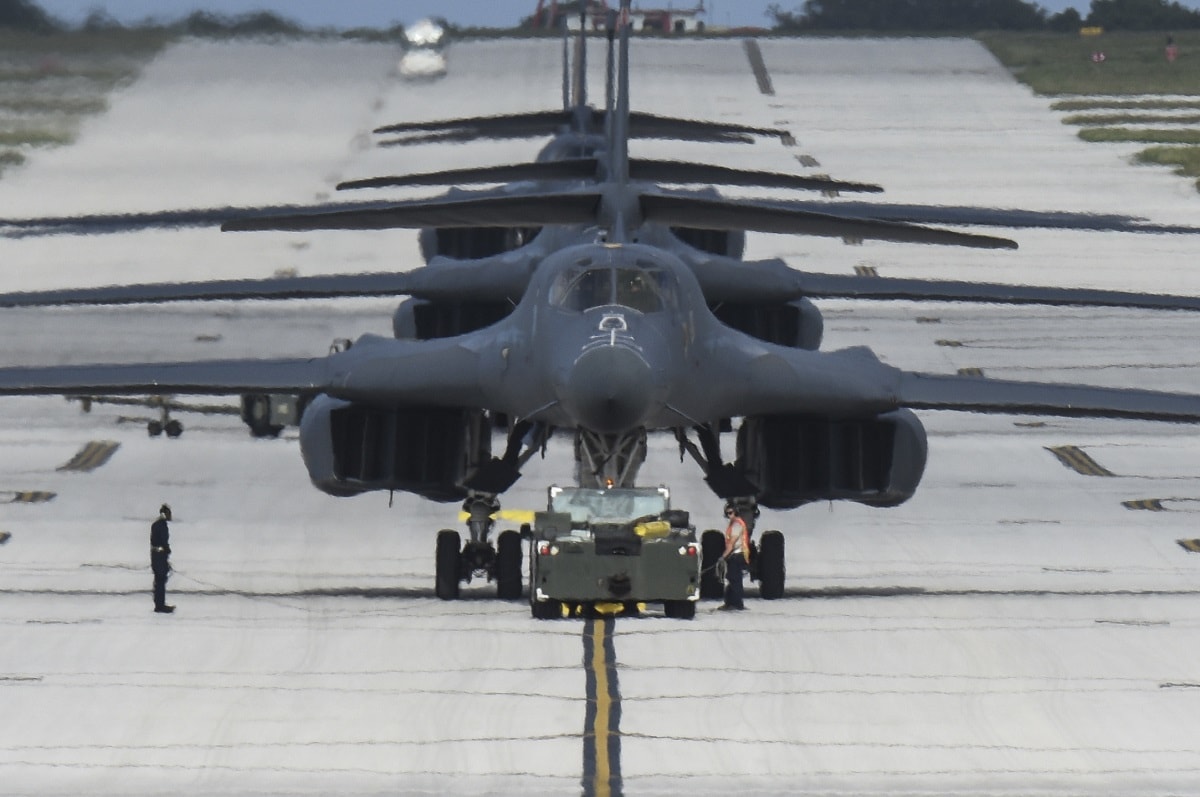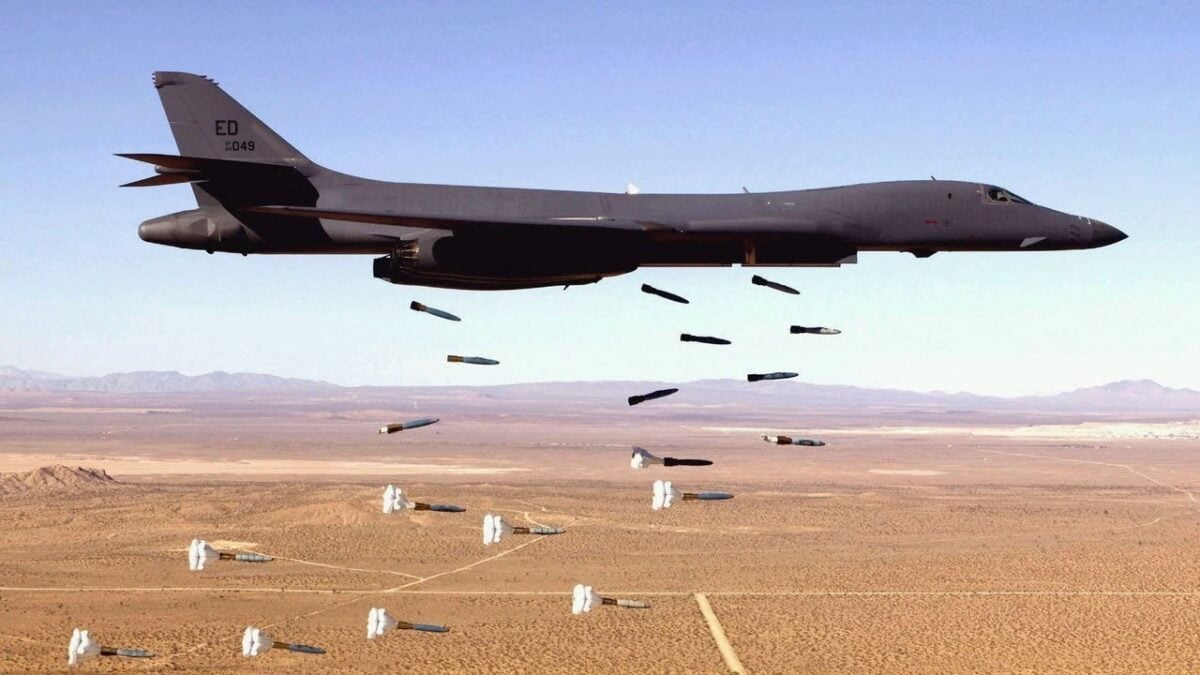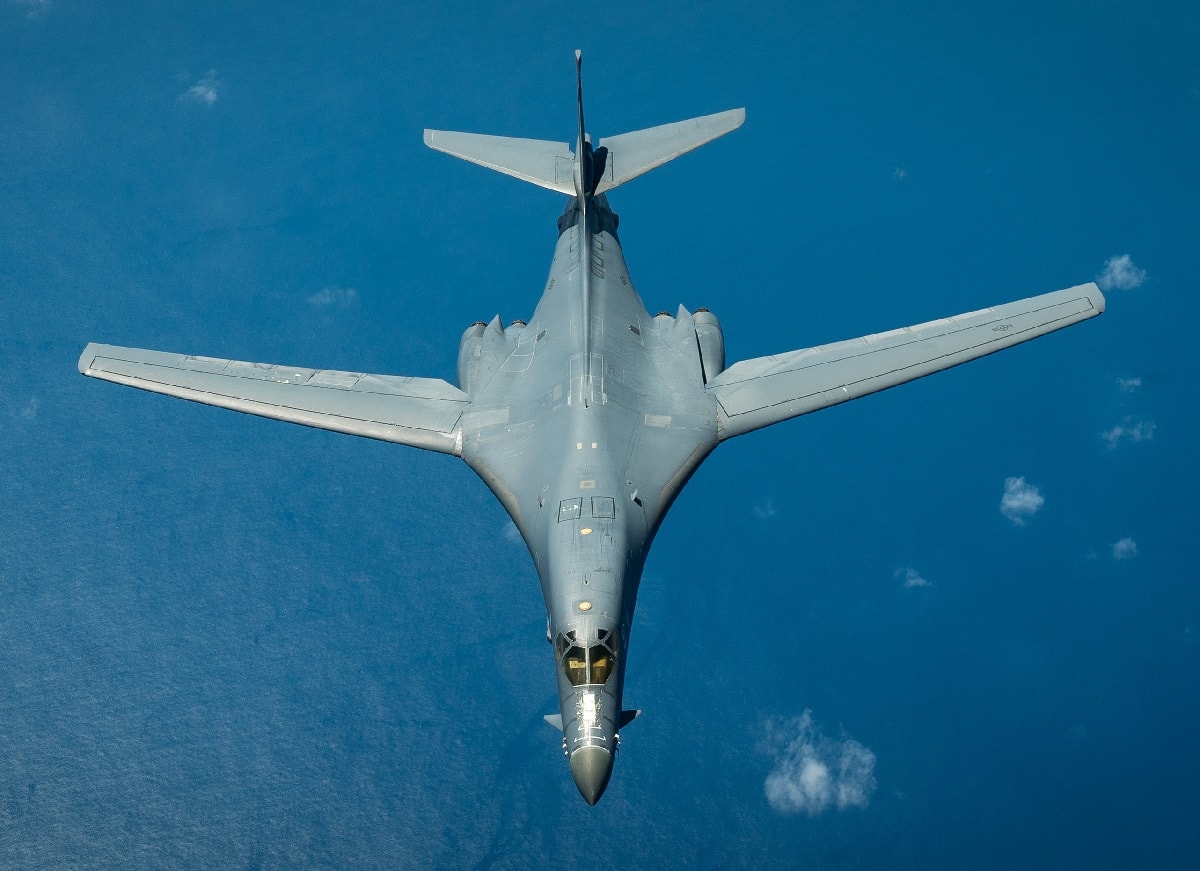Back in the 1980s and early 1980s, the mainstream media (MSM) was constantly bombarding its viewing public with horror stories about various U.S. Department of Defense (DOD) weapons system programs that were running over budget (“cost overruns” as the cliche goes) and behind schedule and/or going through growing pains in terms of mechanical reliability. Examples included the AH-64 Apache helicopter gunship, the Bradley Fighting Vehicle, the B-2 Spirit “Stealth Bomber” … and our current topic, the B-1B Lancer, America’s only supersonic bomber. Let’s take a look at the history of the Lancer and how it survived both the MSM verbal firestorm and the Congressional budget ax.
“B-1 Bob’s” Baby is Born
As we’ve mentioned in previous articles for 19FortyFive, military aircrews — the actual aviators themselves and the ground crews alike — have a longstanding tradition of bestowing unofficial sobriquets upon their beloved aircraft that differ significantly from the manufacturers’/government customers’ official monikers. Hence the A-10 Thunderbolt II is better known as the Warthog, the F-16 Fighting Falcon is better known as the Viper … and the B-1B Lancer is known affectionately as “The Bone.”
The “Bone” was the U.S. Air Force’s third go-around with a supersonic bomber, after (1) the Convair B-58 Hustler that lasted from 1960 to 1970 and (2) the XB-70 Valkyrie that never made it past the experimental phase but scared the Soviets into designing the MiG-25 “Foxbat” speed record-breaking interceptor. The warbird was intended as a replacement for the venerable B-52 Stratofortress. As noted by the Federation of American Scientists (FAS):
“The B-1B represents a major upgrade in U.S. long-range capabilities over the B-52 — the previous mainstay of the bomber fleet. Significant advantages include:
- Low radar cross-section to make detection considerably more difficult.
- Ability to fly lower and faster while carrying a larger payload.
- Advanced electronic countermeasures to enhance survivability.”
Built by Rockwell International – which is now part of Boeing Integrated Defense Systems – the Bone made her maiden flight on December 23, 1974. The plane could tote a 25-ton bomb load at a maximum airspeed of 1.25 Mach (830 mph/ 1,335 kph/ 721 knots), with a max range of 6,500 nautical miles (12,000 kilometers) and a combat range of 2,993 nautical miles (5,543 kilometers). However, as fellow 19FortyFive columnist Harrison Kass points out, “Despite impressive credentials, the B-1 almost never entered service. Indeed, the program was actually canceled, before a former B-film actor stepped in to salvage the B-1.”
For the benefit of our readers who are too young to remember the Cold War, that film actor was U.S. President Ronald Reagan, the immediate successor to Jimmy Carter, who had canceled the program. And one of President Reagan’s strongest allies in officially resurrecting the bomber in 1986 was Congressman Robert “B-1 Bob” Dornan (R-CA, District 38), himself a former USAF pilot.
The Plane That “Almost Got Saddam”
Twelve years after being resurrected by her benefactors in the White House and Congress, the Bone finally got “blooded” in combat. As per the official USAF Fact Sheet:
“The B-1B was first used in combat in support of operations against Iraq during Operation Desert Fox in December 1998. In 1999, six B-1s were used in Operation Allied Force, delivering more than 20 percent of the total ordnance while flying less than 2 percent of the combat sorties…During the first six months of Operation Enduring Freedom, eight B-1s dropped nearly 40 percent of the total tonnage delivered by coalition air forces. This included nearly 3,900 JDAMs, or 67 percent of the total. In Operation Iraqi Freedom, the aircraft flew less than 1 percent of the combat missions while delivering 43 percent of the JDAMs used.” (emphasis added).

B-1B Lancer from the 337th Test and Evaluation Squadron stands by as another Lancer connects with a KC-135 Stratotanker for inflight refueling during a mission over the Gulf of Mexico near Eglin Air Force Base, Fla., Feb. 23, 2012. The 337th TES is a geographically separated unit of the 53rd Wing, which is headquartered at Eglin AFB. The 337th TES is responsible for operational testing of all B-1B defensive and offensive systems and weapons upgrades. (Courtesy photo/Jake Melampy)

Four U.S. Air Force B-1B Lancers assigned to the 9th Expeditionary Bomb Squadron, deployed from Dyess Air Force Base, Texas, arrive Feb. 6, 2017, at Andersen AFB, Guam. The 9th EBS is taking over U.S. Pacific Command’s Continuous Bomber Presence operations from the 34th EBS, assigned to Ellsworth Air Force Base, S.D. The B-1B’s speed and superior handling characteristics allow it to seamlessly integrate in mixed force packages. These capabilities, when combined with its substantial payload, excellent radar targeting system, long loiter time and survivability, make the B-1B a key element of any joint/composite strike force. While deployed at Guam the B-1Bs will continue conducting flight operations where international law permit. (U.S. Air Force photo by Tech. Sgt. Richard P. Ebensberger/Released)

A U.S. Air Force B-1B Lancer, assigned to the 37th Expeditionary Bomb Squadron, Ellsworth Air Force Base, S.D., flies over the East China Sea, Jan. 9, 2018. The Lancer serves as the premier platform for America’s long-range bomber force, carrying the largest conventional payload of guided and unguided weapons in the Air Force inventory. (U.S. Air Force photo by Staff Sgt. Peter Reft)

Image: YouTube Screenshot.
Regarding Operation Iraqi Freedom (OIF), arguably the most memorable mission flown by the Bone crews was one carried on April 2003 out by members of the 34th Bomb Squadron of the 28th Air Wing, based at Ellsworth Air Force Base, South Dakota. Couched in the sanitary official terminology of “leadership target,” to put it more bluntly, the objective was to kill Saddam Hussein. They just barely missed him. On a humorous personal side note, a year later, when I was a 1st Lieutenant serving as an Action Officer (AO) on the HQ Air Mobility Command (AMC) Threat Working Group (TWG), one of our fellow TWG AOs was a then-Major who had been an offensive systems officer on the B-1; naturally, we gave him some good-natured ribbing along the lines of “Oh, you’re the ones that almost got Saddam!”
Where Are They Now?
Going back to that bit about how the B1-B was intended to replace the B-52 AKA “The B.U.F.F?” Well, it didn’t quite work out that way. The B.U.F.F. is still going strong, but whilst the Bone is still in serving, she’s steadily being retired; Air Force Global Strike Command (AFGSC) retired 17 of the Lancers last year, with 13 of them sent to “The Boneyard” at Davis-Monthan AFB, Arizona (near Tucson). Forty-five still remain out of the 100 total produced, but the USAF hasn’t yet announced when it plans to retire those holdouts.
Fortunately for aviation history buffs, not all of those retired Bones are headed to The Boneyard (no pun intended). One of those 17 retired warbirds is now on display at the National Museum of the United States Air Force at Wright-Patterson AFB near Dayton, Ohio.
Christian D. Orr is a former Air Force officer, Federal law enforcement officer, and private military contractor (with assignments worked in Iraq, the United Arab Emirates, Kosovo, Japan, Germany, and the Pentagon). Chris holds a B.A. in International Relations from the University of Southern California (USC) and an M.A. in Intelligence Studies (concentration in Terrorism Studies) from American Military University (AMU). He has also been published in The Daily Torch and The Journal of Intelligence and Cyber Security. Last but not least, he is a Companion of the Order of the Naval Order of the United States (NOUS).

